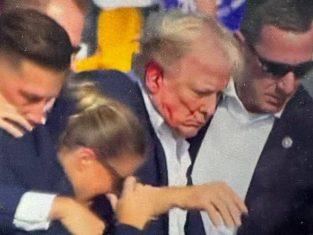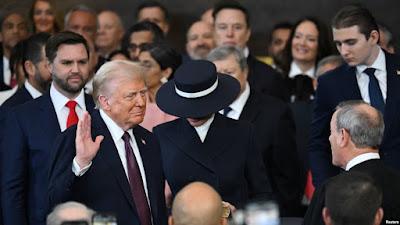By Sonali Shah
”A deal’s been done, subject to a medical.”
These are the words we hear throughout the Premier League transfer window, when clubs have just a few weeks to buy and sell players to fine-tune their team. The fees have been agreed and the personal terms have been sorted. Now it’s time for the final hurdle in negotiations – a player’s medical examination. But what do these medicals actually involve? We found out this summer how much they can differ club-to-club. French international Loic Remy’s £8m move from QPR to Liverpool fell through after he apparently failed his medical.
The striker then went on to sign a four-year deal with Chelsea for £10.5m. Confidentiality means it is difficult to get any straight answers about medical exams, but it is obvious Stamford Bridge was prepared to take a risk that Anfield wasn’t. No pass or fail Dr Charlotte Cowie has been in charge of the medical teams at Tottenham and Fulham and is now based at the FA’s National Football Centre at St George’s Park, where all English teams have the option of sending their players to be assessed. On a visit to their state-of-the-art medical facilities, she informs me her team never really “pass” or “fail” a player.
It’s not necessarily in a club’s interests to be really open.” Dr Charlotte Cowie FA doctor
”One man’s fail is another man’s pass. It really depends on where the player is injury-wise, what the manager and the club want from that player and what it’s going to cost. It’s a risk-benefit analysis.” Dr Cowie explains that her role in a medical for a footballer being transferred was to gather a medical history and carry out a physical examination of the player’s body.
Further investigations might include MRI scans, blood tests and cardiac screening – but it depends on how much time they have. “My ideal medical would probably last about four hours. If you’re in an organised situation like Jose Mourinho at Chelsea, who knows who he wants before the signing window opens, you get it all done and dusted long before the window closes.” But, as we know, not every manager is as organised as ‘”The Special One”. And the selling club isn’t always forthcoming about a player’s medical history.
Lack of openness
“It’s not necessarily in a club’s interests to be really open,” says Dr Cowie. “Sometimes they come with scans and notes, sometimes they come with nothing. Sometimes they come with a whole host of notes but in a different language.” After seeing the club doctor, a player is passed to physiotherapists and sports scientists for his fitness tests. Steve Kemp, a physiotherapist for the England team who is also based at St George’s Park, suggests that medicals would ideally be held over a 24-48 hour period to allow for a full range of screenings, scans and physiological testing to be held and to involve the growing sports science departments most top clubs now have.
I find Steve in the human performance lab at St George’s Park. He has asked me to come in my gym kit so I can try out some of the equipment similar to that used by clubs for medicals. He straps me in to their isokinetics machine. This allows him to test and compare the strength and imbalances of contracting muscles to assess performance and injury risk. The machine brings back a frustrating memory for Steve. Working with a Premier League team, he once dealt with a player (he won’t say who) on the machine who went out to make a phone call, “and they never came back. Another club’s phoned with a better offer and they’ve disappeared – these things happen unfortunately”.
Better offer
The treadmill tests how effectively the body uses oxygen. It’s not just closing in on deadline day that brings time pressures for a medical. Dr Cowie said: “If there’s another club chasing the same player, even though the signing window’s not closing you might be up against it time-wise, because you want to close the deal before another club gets in there,” says Dr Cowie. I ask how the players themselves cope with going through a medical exam for a potential new club.
“Sometimes they’re anxious you’re going to find something they didn’t know about or something they did know about but didn’t want you to know,” says Dr Cowie. “You can’t always expect them to give you all the information about their injuries.” Steve Kemp tells me it is common to come across a problem they weren’t expecting to find. ”If we were to scan every player in the Premier League, I would imagine you’d pick things up they weren’t even aware of in more than half of them.” It turns out a medical isn’t always a hurdle that needs to be overcome. “It’s our job to give the board and manager as much information as possible,” says Steve. “If the manager really wants a player and he’s aware of his injuries history, who are we to stop them signing him?”
Dr Cowie has a wry smile on her face: “The reality is sometimes they’ve already decided and it’s just a matter of ticking some boxes and knowing who you’re going to be dealing with over the next season.” After being put through my paces on their VO2 Max treadmill – which measures the rate at which my body is able to consume oxygen while exercising – Steve breaks the news to me that, based on my results, not even Got No Hope United will be putting in a bid for me. But apparently I did “fantastically well” for a 34-year-old who only manages to go to the gym a couple of times a week. I will take that! After my own medical, I spot a reaction machine in the corner of the human performance lab. A leaderboard with names like Didier Drogba, Radamel Falcao, Ellen White and Olly Murs stood next to it. Many of us have played on these machines in an arcade and I just couldn’t resist seeing how I would compare. I wish I hadn’t. I got 42 touches in 60 seconds which was the same score as David Cameron – did I mention he had the lowest score on this leaderboard? It turns out I’m as unfit as the prime minister.
Culled from BBC Sport





